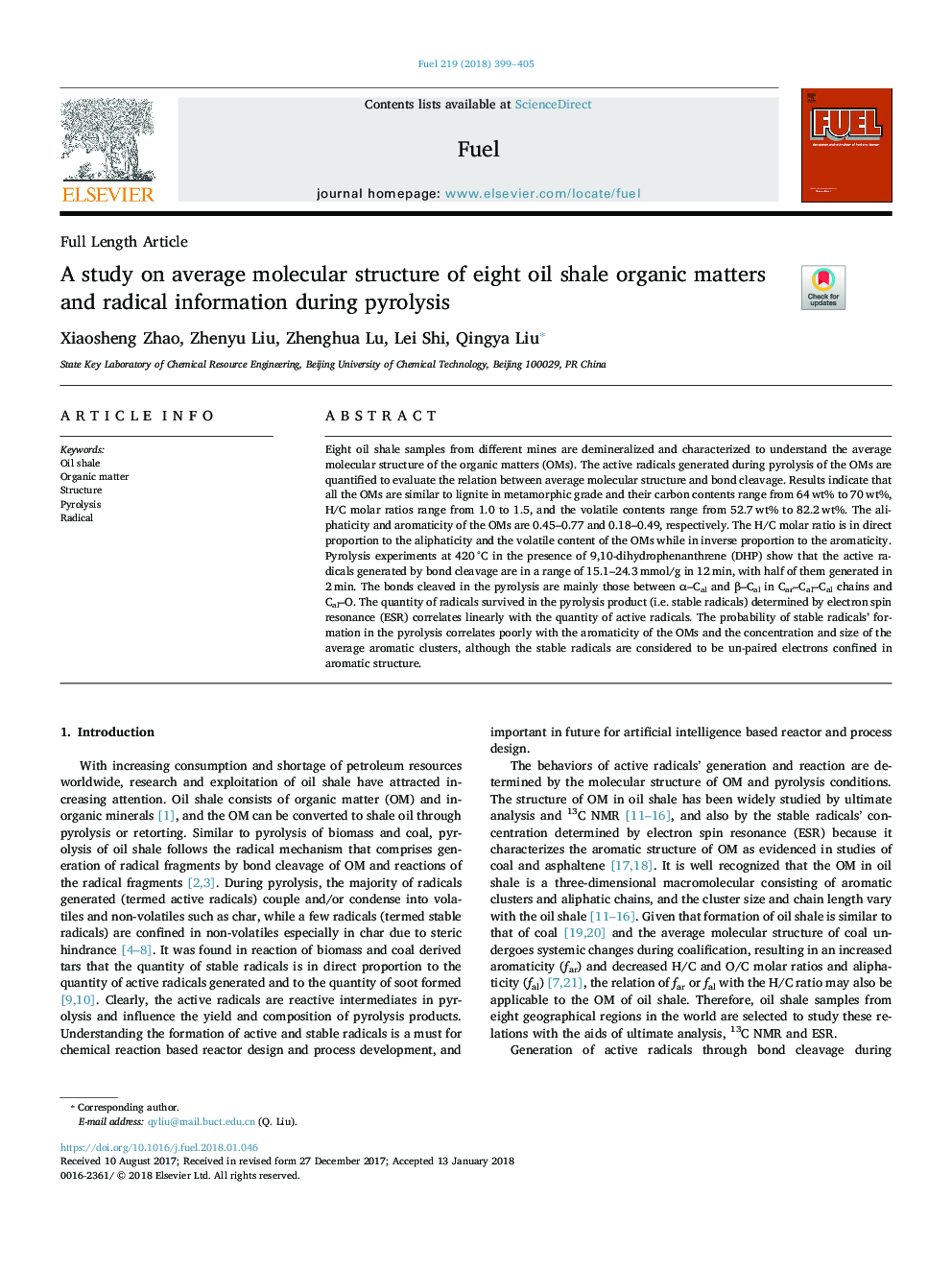| Article ID | Journal | Published Year | Pages | File Type |
|---|---|---|---|---|
| 6631864 | Fuel | 2018 | 7 Pages |
Abstract
Eight oil shale samples from different mines are demineralized and characterized to understand the average molecular structure of the organic matters (OMs). The active radicals generated during pyrolysis of the OMs are quantified to evaluate the relation between average molecular structure and bond cleavage. Results indicate that all the OMs are similar to lignite in metamorphic grade and their carbon contents range from 64â¯wt% to 70â¯wt%, H/C molar ratios range from 1.0 to 1.5, and the volatile contents range from 52.7â¯wt% to 82.2â¯wt%. The aliphaticity and aromaticity of the OMs are 0.45-0.77 and 0.18-0.49, respectively. The H/C molar ratio is in direct proportion to the aliphaticity and the volatile content of the OMs while in inverse proportion to the aromaticity. Pyrolysis experiments at 420â¯Â°C in the presence of 9,10-dihydrophenanthrene (DHP) show that the active radicals generated by bond cleavage are in a range of 15.1-24.3â¯mmol/g in 12â¯min, with half of them generated in 2â¯min. The bonds cleaved in the pyrolysis are mainly those between α-Cal and β-Cal in Car-Cal-Cal chains and Cal-O. The quantity of radicals survived in the pyrolysis product (i.e. stable radicals) determined by electron spin resonance (ESR) correlates linearly with the quantity of active radicals. The probability of stable radicals' formation in the pyrolysis correlates poorly with the aromaticity of the OMs and the concentration and size of the average aromatic clusters, although the stable radicals are considered to be un-paired electrons confined in aromatic structure.
Related Topics
Physical Sciences and Engineering
Chemical Engineering
Chemical Engineering (General)
Authors
Xiaosheng Zhao, Zhenyu Liu, Zhenghua Lu, Lei Shi, Qingya Liu,
